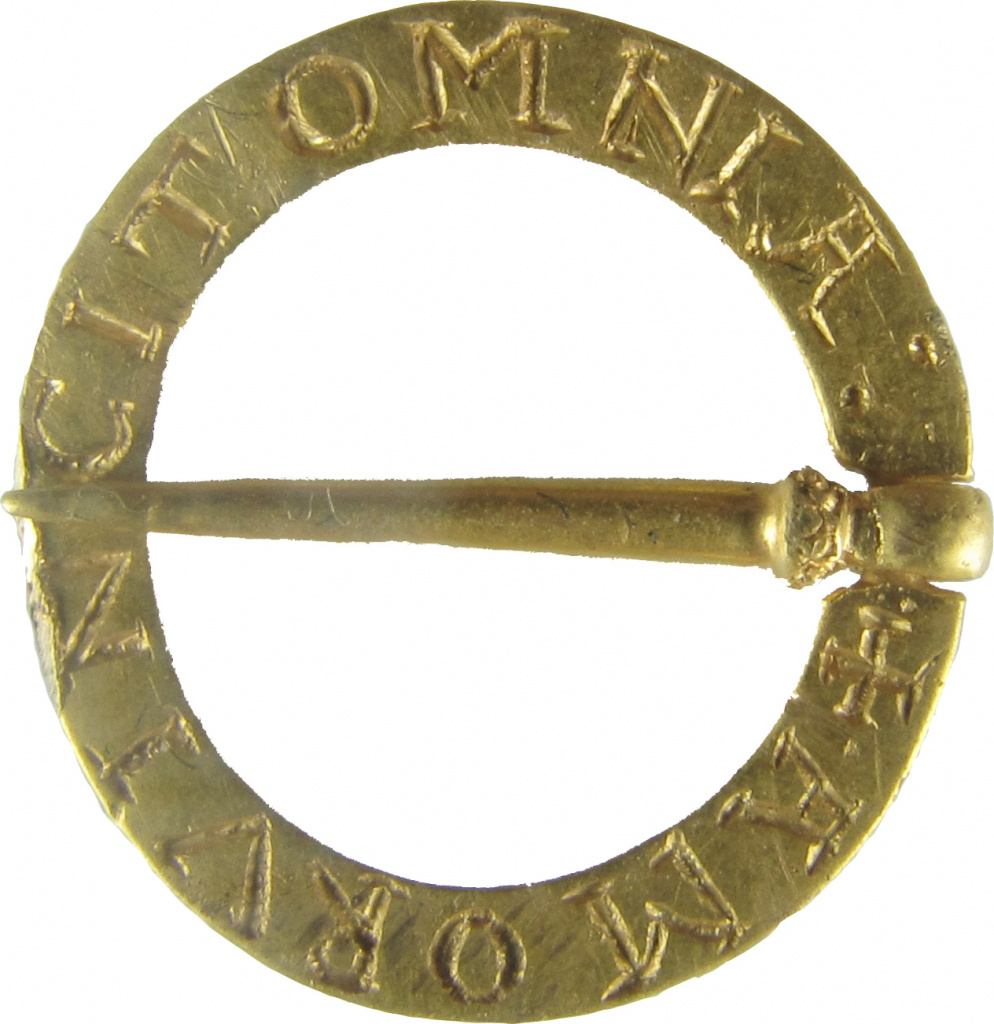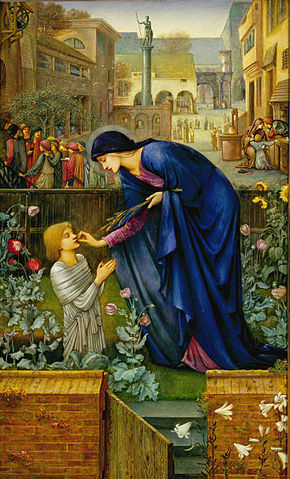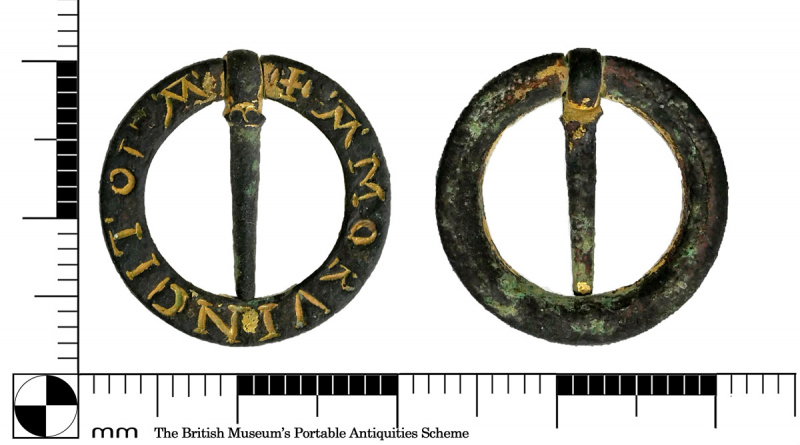Amor Vincit Omnia brooch
A medieval gilded copper-alloy brooch which has been dated to the latter part of the 13th or 14th century. In Lombardic script, the inscription reads AMOR VINCIT O[MNI]A.

Photo: Colchester and Ipswich Museum Service CC By SA2.0
A number of brooches of this style with similar inscriptions have been recorded at the PAS. The are made of copper-alloy, silver or, as in the example shown here, gold.
Amor Vincit Omnia
Amor Vincit Omnia is one of the most well known Latin phrases. It is an altered form of a line from Virgil’s Bucolica or Eclogae, published in 37 BC. The full line, with the words in a different order, reads “Omnia vincit amor: et nos cedamus amori“, “Love conquers all; let us, too, yield to love!”. “Amor Vincit Omnia” is certainly the the more well known version now. Virgil needed to put the word “Omnia” first to have a longer vowel sound at the start of the sentence to give the correct meter to his poem.
The phrase was spoken by a lovesick character called Gallus who is dying of a broken heart.
Prioress in Canterbury’s Tales
Chaucer wrote Canterbury Tales between 1387 and 1400 in Middle English. One of the pilgrims is a Prioress who is named as Madame Eglantine. She is described in The General Prologue:

Painting by Edward Coley Burne-Jones, 1869-98
Of smal coral aboute hir arm she bar
A peire of bedes, gauded al with grene,
An theron heng a brooch of gold ful sheene,
On which ther was first write a crowned A,
And after Amor vincit omnia.
The brooch is chosen by Chaucer as it relates to courtly rather than God’s love. Along with her fancy rosary, love of lap dogs and her fake French accent it paints a picture of a social climber, which contrasts with the simple piety of her tale.
The brooch and Canterbury tales are from the same period. It could be that Chaucer used a piece of jewellery which was already familiar for his readers or alternatively, it was Chaucer who popularised this inscription on a brooch.

